The **Plumed Guinea Fowl** (*Guttera plumifera*), also known as the **White-cheeked Guinea Fowl**, is a unique and striking bird native to the dense forests and forest edges of central and western Africa. Renowned for its elegant plumage, this species is one of the lesser-known members of the guinea fowl family, standing out for its graceful appearance and relatively elusive nature in the wild.
### **Physical Appearance:**
The Plumed Guinea Fowl is a medium-sized bird, typically measuring between 40 and 60 cm (16 to 24 inches) in length and weighing around 1.5 to 2 kg (3.3 to 4.4 lbs). Its body is generally covered in dark, glossy feathers with distinctive white spots that are spread across the body, particularly on the wings and back. One of the most striking features of the Plumed Guinea Fowl is its head, which is adorned with a crown of long, flowing feathers, giving the bird its “plumed” name. These long feathers are especially prominent on the back of its head and neck, adding to its majestic and unique appearance.
The bird’s face is characterized by its bare, blue skin, with a prominent red wattle hanging from its throat. Unlike other guinea fowl species that often feature more brightly colored heads, the Plumed Guinea Fowl has a relatively subtle coloration, with blue skin around the face and neck, contrasting against the darker plumage of its body. The eyes of the bird are yellow or orange, which provides a striking contrast to the dark tones of the feathers.
The bird’s plumage is a mixture of dark purples and blues, with fine white spots or speckles scattered across the body. Its long tail feathers are also decorated with a similar pattern, making the bird visually appealing and easily identifiable when seen in the wild. The overall effect of the bird’s appearance is one of quiet elegance, and it is often described as one of the most beautiful guinea fowl species.
### **Habitat and Distribution:**
Plumed Guinea Fowls are found primarily in the lowland forests and forest edges of central and western Africa. Their range includes countries such as Cameroon, Gabon, the Republic of Congo, and parts of the Democratic Republic of the Congo. They are primarily forest-dwelling birds, preferring the dense undergrowth and the thick vegetation of tropical rainforests. However, they are also known to inhabit the edges of these forests, where they can find open spaces for foraging and access to water sources.
Unlike some other guinea fowl species that are more common in savannas or grasslands, the Plumed Guinea Fowl is more adapted to the humid, sheltered environments of the forest. These birds are typically found in regions with high rainfall and abundant vegetation, where they can forage for food and find shelter from predators. The dense forest provides protection and a suitable environment for nesting.
### **Behavior and Social Structure:**
The Plumed Guinea Fowl is a relatively shy and secretive bird, often preferring to stay hidden in dense vegetation. While they are primarily ground-dwelling, they are not as commonly seen as other guinea fowl species, as they are well adapted to life in the forest underbrush. They forage primarily on the forest floor, searching for seeds, fruits, insects, and other small invertebrates, which make up the majority of their diet. They are also known to forage for fungi and other edible plant materials.
These birds are social and can be found in small groups, usually consisting of 5 to 12 individuals, although larger flocks may occasionally form. They are highly vocal and communicate with each other through a series of soft, melodic calls. Unlike the harsh, loud calls of some other guinea fowl species, the Plumed Guinea Fowl produces softer sounds that blend into the forest environment. These calls are used for maintaining flock cohesion, warning of potential threats, and facilitating communication between family members.
Plumed Guinea Fowls are generally more timid than their relatives, and they are quick to take cover when they feel threatened. They rely on the dense forest cover for protection, and they tend to be very wary of predators. When startled, they may take flight for short distances, but they are primarily ground birds and prefer to stay hidden in the underbrush. Their ability to camouflage and stay quiet in the dense foliage helps protect them from predators such as large birds of prey and carnivorous mammals.
### **Reproduction:**
The breeding behavior of the Plumed Guinea Fowl is not as well-studied as that of other guinea fowl species, but it is believed that they follow similar reproductive patterns. Breeding typically occurs during the rainy season when food is more abundant, and conditions are ideal for raising offspring. The female typically builds a nest on the ground, usually hidden under dense vegetation or in a sheltered area, where she lays a clutch of 4 to 8 eggs. The eggs are light brown or olive in color and speckled with darker markings.
After laying the eggs, the female incubates them for approximately 25 to 28 days. The male often stays close to the nest, guarding it from predators and providing protection for the female. Once the eggs hatch, the chicks are precocial and are able to move around and follow the parents almost immediately. The parents remain protective of their young for several weeks, ensuring that they are kept safe from predators as they grow and develop.
### **Conservation Status:**
The Plumed Guinea Fowl is currently listed as *Least Concern* by the International Union for Conservation of Nature (IUCN), meaning that it is not facing any immediate threat of extinction. However, like many forest-dwelling species, it is susceptible to habitat loss due to deforestation and human encroachment. The destruction of its natural habitat can threaten its population in certain areas, especially as forests are cleared for agriculture or urban development.
In some regions, hunting and trapping may also pose a threat to local populations, though these practices are less widespread than for more commonly found species of guinea fowl. Conservation efforts are focused on preserving the forest habitats where the Plumed Guinea Fowl resides, as well as maintaining sustainable practices to protect its population.
### **Conclusion:**
The Plumed Guinea Fowl is a unique and beautiful species of bird that stands out for its elegant plumage and shy, secretive nature. Native to the dense forests and forest edges of central and western Africa, this guinea fowl thrives in the humid, sheltered environments of tropical rainforests, where it forages for seeds, insects, and plants. Its striking appearance, including its long, plumed head feathers and speckled body, makes it a fascinating bird to observe. Though not as commonly seen as other guinea fowl species, the Plumed Guinea Fowl remains an important part of the African ecosystem, and efforts to protect its habitat ensure that it can continue to flourish in the wild.

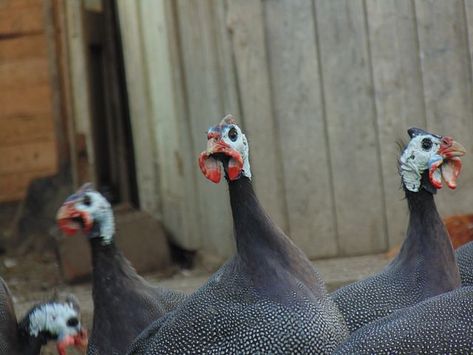
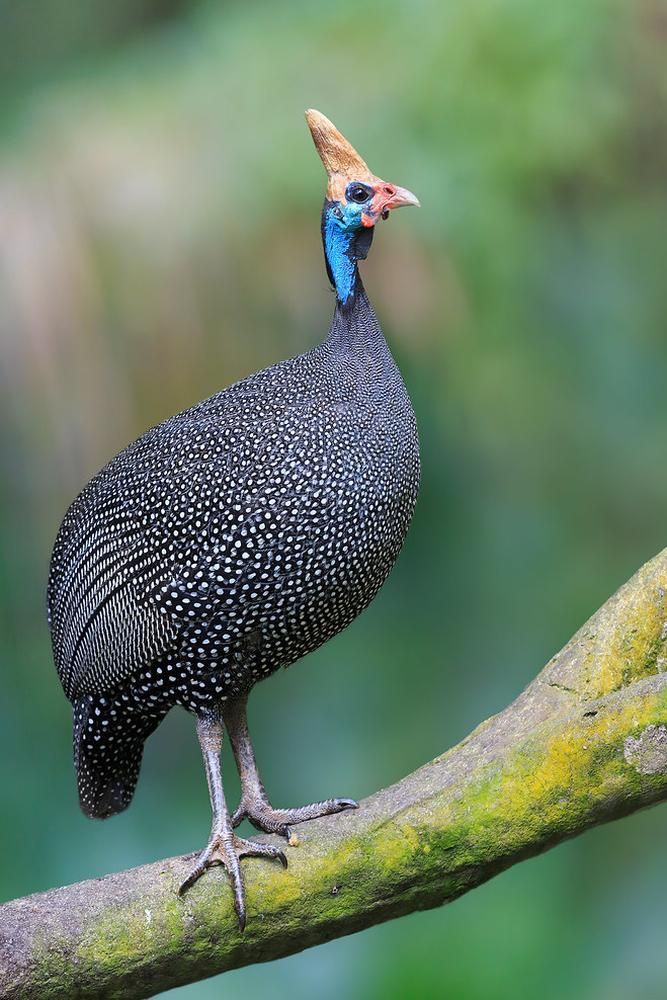
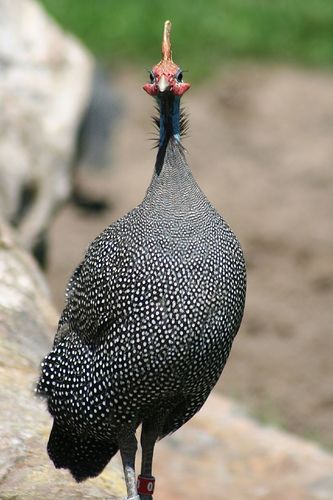
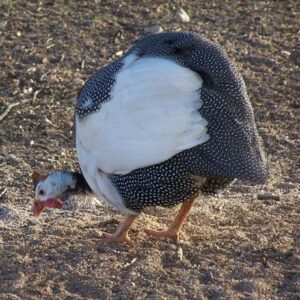

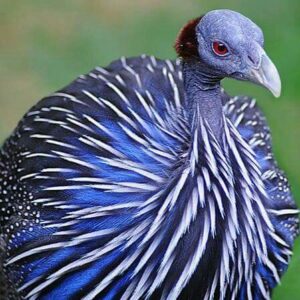
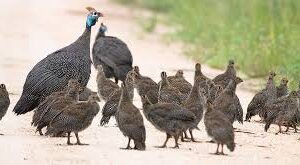
Reviews
There are no reviews yet.